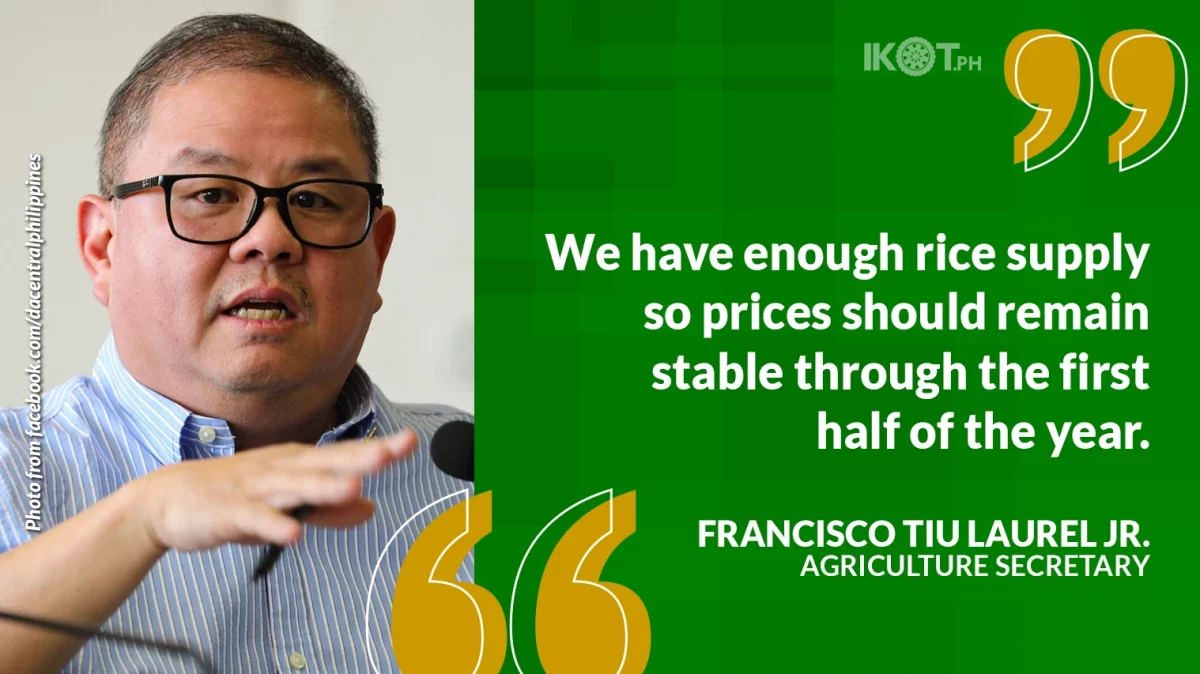Agriculture Secretary Francisco Tiu Laurel, Jr. assured the public that the country’s rice supply is sufficient through the first half of this year, with recent imports and the upcoming harvest that peaks in March and April, ensuring stable price of the country’s main food staple through June in spite of El Nino.
Tiu Laurel said, however, that prices may stay elevated through September this year, due to concerns over El Nino’s impact on global rice supply and heightened demand for the grain that, consequently, is keeping international prices high.
Our priority now is market stability.”
“We have enough rice supply so prices should remain stable through the first half of the year. Our priority now is market stability,” the agriculture chief said.
The Philippines recently signed a five-year rice supply deal with Vietnam that ensures a source of 1.5 million to 2.0 million metric tons of rice a year. India, on the other hand, also promised to provide the country with additional supply despite the import ban on non-basmati rice.
A total 750,000 metric tons of imported rice have arrived in December and January, buttressing local inventory.
“What we need to guard against now are profiteers who may attempt to exploit the situation by using El Nino as excuse to hoard rice supply to push local prices to unreasonably high levels.”
“What we need to guard against now are profiteers who may attempt to exploit the situation by using El Nino as excuse to hoard rice supply to push local prices to unreasonably high levels,” the agriculture head said.
He instructed DA Assistant Secretary and Spokesman Arnel de Mesa to coordinate with the Department of Trade and Industry and law enforcement agencies to closely monitor surges in the price of rice in the market.
The Philippine Statistics Authority identified rice as a major risk in the consumer price index, which is used to measure inflation. Economic Planning Undersecretary and National Statistician Dennis Mapa suggested that inflation could have been lower were it not for the double-digit increase in rice prices compared last year given its weight in the consumer basket.
Mapa said since price base for rice between January and July last year was lower, any increase in the price of the national staple could be magnified in the inflation print.
Headline inflation in January eased to 2.8 percent, its slowest pace since October 2020, during the height of the COVID-19 pandemic.
Rice has a weight of 8.87 percent in the consumer basket used to determine headline inflation and an even higher at 17.87 percent share in the spending of the bottom 30 percent of income households.



